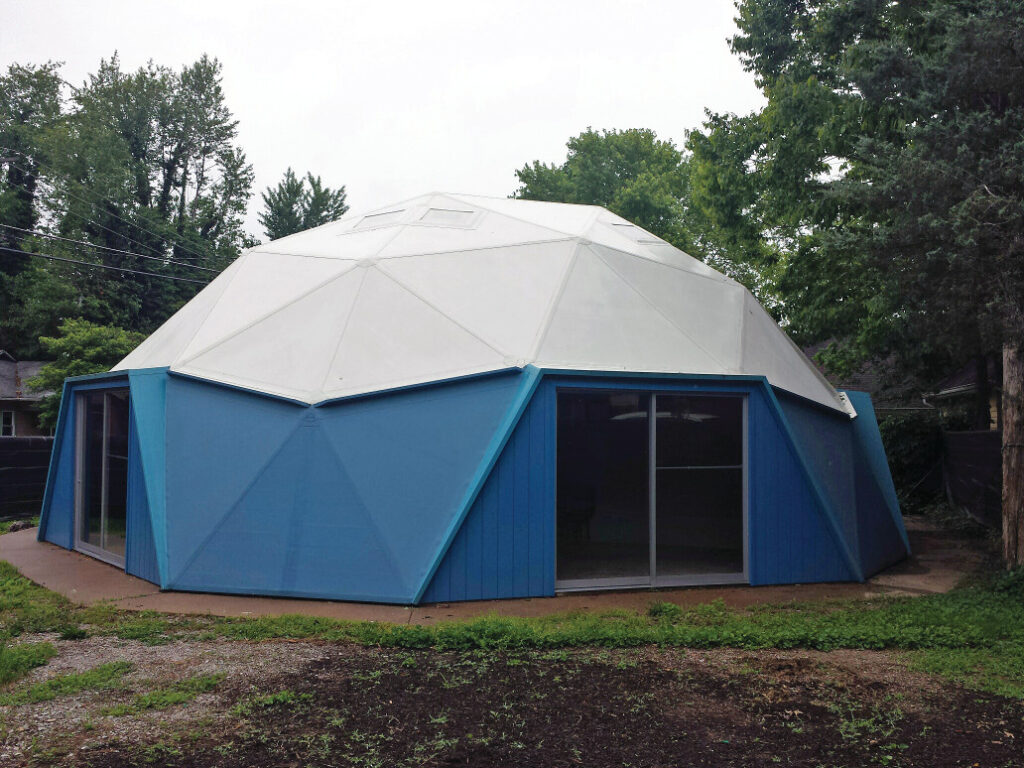Known by most as “Bucky” Fuller, Buckminster Fuller was a pioneering American futurist, novelist, designer, inventor, systems theorist, and architect. His most notable contribution to society is the widespread use of the lightweight, interconnecting polygon-built geodesic dome. Fuller passed away on July 1, 1983, having been born on July 12, 1895. Among the many fields Fuller worked in were architecture, engineering, mathematics, and philosophy. He strongly desired to address global issues such as resource depletion, housing shortages, and environmental deterioration with effective and long-lasting solutions.
Fuller’s geodesic domes are solid and lightweight constructions that are simple to assemble from an assembly of linked triangles. These domes are renowned for their durability, effectiveness, and capacity to enclose huge areas with the least amount of material. To depict the Earth’s surface with the least amount of distortion, Fuller created the Dymaxion map. The Dymaxion map, in contrast to conventional maps, represents the entire planet as a single, uninterrupted landmass.
Fuller created the Dymaxion car to be an aerodynamic and fuel-efficient three-wheeled vehicle. The Dymaxion automobile, of which only a few were ever constructed, is still a famous illustration of Fuller’s avant-garde approach to mobility. The field of synergetics, which investigates the geometry of energy systems and their connections to material, biological, and social phenomena, was founded by Fuller. The concept of synergy highlights how all systems in the cosmos are interdependent and interconnected.
Fuller promoted what is known as “comprehensive thinking” or “design science,” which is an all-encompassing problem-solving method. This strategy encourages people to think about the bigger picture and the implications of their choices and behaviours.
Buckminster Fuller and Architecture
The concepts of visionary architect, inventor, and futurist Buckminster Fuller have significantly influenced design and architecture. Fuller is mainly known for his development of the geodesic dome in architecture. These constructions are made up of linked triangles that resemble spheres or domes. Massive areas can be enclosed by geodesic domes, which are solid and economical in their use of resources. They have served as dwellings, greenhouses, and exhibition areas, among other functions.

Fuller developed the idea of “synergetics,” which examines physics, geometry, and systems thinking concepts to comprehend the interdependence and effectiveness of natural systems. He used these ideas to inform his architectural designs to maximise functionality and construct buildings that blend in with the surrounding environment. Over time, Fuller came up with the phrase “ephemeralization,” which describes the capacity to do more with fewer resources. He thought that efficiency could be continuously increased through technology and design, enabling people to accomplish more with less. This idea motivated his architectural designs, which promoted light and effective structures.
Fuller’s experimental Dymaxion House and Dymaxion Car depict his futuristic way of living and getting around. Prefabricated and energy-efficient, the Dymaxion House was designed to be readily moved and mass-produced. Simultaneously, the Dymaxion Car was sleek for optimal fuel economy and manoeuvrability. Fuller took an all-encompassing, multidisciplinary approach to architecture. He is a proponent of using comprehensive design thinking to address complex challenges by considering social, environmental, and technological factors. A generation of architects and designers were encouraged by his work to think creatively and carefully about the broader effects of their creations.
Fuller’s Dymaxion House
Buckminster With Fuller’s Dymaxion House, innovative, integrative architectural theory was presented. Fuller used an integrated approach to the entire temperature system, environmental control systems, floor plans, interior design, materials, weather protection, structure, and utilities. Fuller found methods for lighting a home’s interior and energising the manner of life to maximise benefits with the least amount of energy utilised. A traditional home’s materials and construction style determine almost every aspect of the building. Nonetheless, Fuller conducted experiments involving inventive methods of merging the primary subsystems.
‘When Buckminster Fuller first presented the Dymaxion House to the public in 1927, he famously and provocatively asked, “How much does your house weigh?” It was the same year that Charles Lindbergh flew across the Atlantic in the Spirit of Saint Louis, the structure of which was fabricated from aluminium struts covered with specially treated fabric. In this context, the all-aluminium “fuselage” of the Dymaxion House may be considered more advanced than the fuselage of the Spirit of Saint Louis. The aluminium Dymaxion House would weigh about three tons, “freight on board” from the factory. Compared to conventional dwellings, that mass typically weighs at least 1.5 orders of magnitude more. Fuller was making the point that it would be possible to mass produce and deliver a much more economical and repeatable house using aviation fabrication techniques’, writes Marc M. Cohen.
According to Fuller, the design implied the logical integrity of various architectural aspects rather than posing an aesthetic dilemma. Like Dymaxion House, space habitation should be viewed and planned as an integrated system to support astronauts’ lives and well-being. The Dymaxion House is an extraordinarily intricate and advanced response to the massive surplus aircraft manufacturing capability and the housing problem that followed World War II. If one had to summarise Buckminster Fuller’s design philosophy in the Dymaxion House, it might be something like “Start from considering the totality of the design problem.”

The fact that the Dymaxion House addressed every key system and subsystem sets it apart from almost every other concept for lunar and planetary base habitats that have been proposed to date. Conversely, practically all these proposals for lunar and planetary habitats are “one trick ponies.” This phrase indicates that each habitat notion is optimised for one or potentially two characteristics or functions, with the remaining being treated with “benign neglect.”
Imaginary Space
Teaching mathematics with architecture in architecture schools raises a few clear concerns. What place does mathematics have in architecture? What role does mathematics have in architecture? These days, “what” should pupils know? One of the structural planner’s primary calculation tools is mathematics. Because computers can see virtual buildings, the mathematical principles ingrained in computer science are significant because they dictate representation and design. There are instances when mathematics is used in architecture. Many examples use geometry as a design tool; one example is the organisation of rooms in a design using numerical and geometrical programmes.
The concepts of visionary Buckminster Fuller still influence and mould our reality today. Fuller showed the value of thinking creatively and questioning received wisdom with his ground-breaking inventions, such as the geodesic dome, and his dedication to sustainability and social responsibility. His legacy is a constant reminder of the value of having the guts to pursue significant dreams, valuing multidisciplinary thinking, and working towards solutions that will benefit both people and the environment. Fuller’s concept, which challenges us to envision a future where technology and design intersect to create a more sustainable and equitable world for future generations, is as relevant as we negotiate the problems of the twenty-first century.
Exploring the Visionary World of Rem Koolhaas: From “Delirious New York” to “Junkspace”





